There are relatively few animals that can truly move to a beat, but several do move in a dance-like way, sometimes showing off some complex choreography.
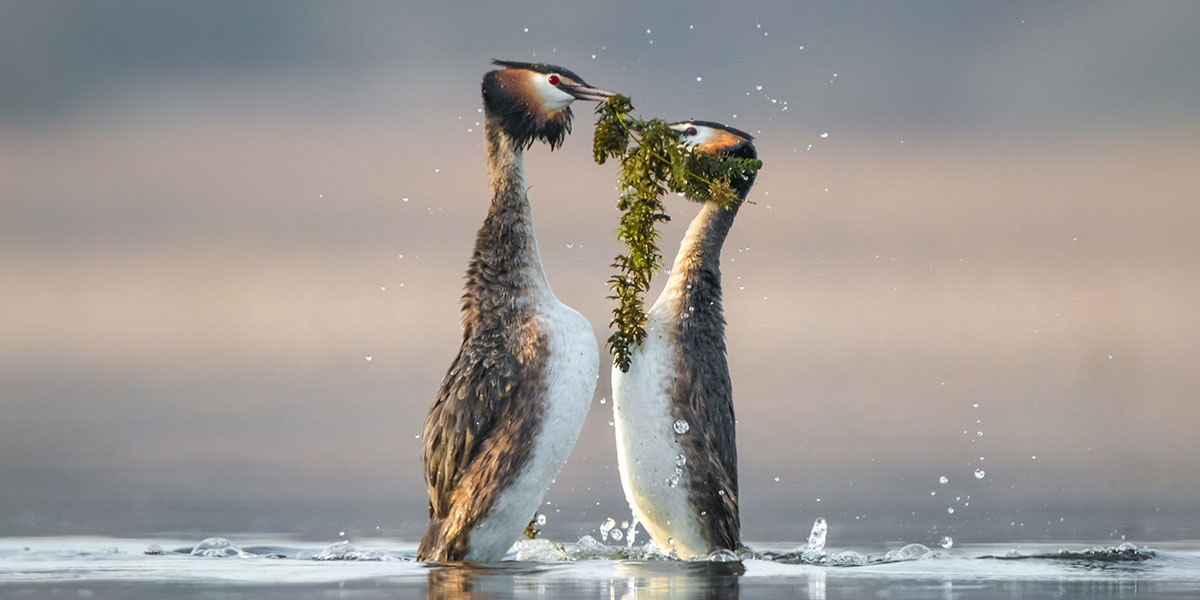
A pair of great crested grebes performing a weed dance © dim.vil/Shutterstock
Size, colour and shape can all be reasons for animals to choose one individual over another as a mate. But in some species, behaviours that look like intricate dance steps play a very important role.
Greater sage-grouse
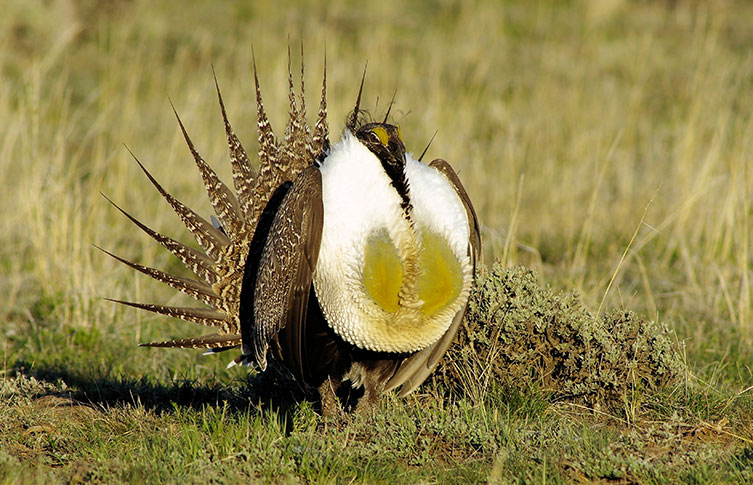
A male greater sage-grouse with its bright yellow gular sacs on show © Stephen Torbit/USFWS via Flickr (CC BY 2.0)
The greater sage-grouse (Centrocercus urophasianus) is a mottled grey-brown bird found in shrubland in southeastern Canada and the western USA.
Male sage grouses have an energetic courtship ritual. In spring, the birds congregate on open ground, known as a lek, where they compete for females by performing a strutting display. From their fluffy collar of white feathers two yellow air sacs (gular sacs) appear as the male inflates them and makes an unusual, popping and whistling sound. They repeat their body-popping display in bouts of movement and sound to attract nearby female grouse.
The mating season is short and female sage grouse typically only attend a lek for 2-3 days each spring. The hens visit several male grouse before choosing an acceptable mate and then leave for nesting grounds.
Mudskippers
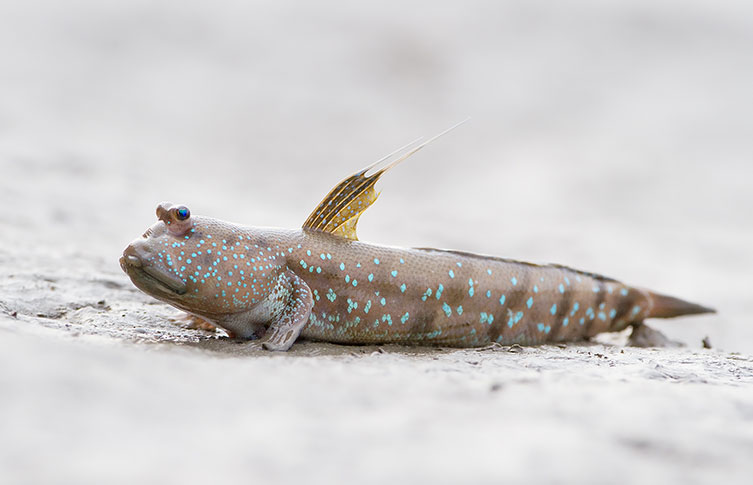
Mudskippers are known for their lofty leaps, which they use to attract the attention of females © JJ Harrison via Wikimedia Commons (CC BY-SA 3.0)
While most fish are entirely dependent on water, mudskippers are unusual in that they are amphibious, typically spending their time in intertidal habitats.
Mudskippers live in muddy burrows, although their performances take place outside. Male mudskippers use several moves to try and impress females, including twirling their tails, arching their bodies, displaying their dorsal fin and snout touching (where the male touches the female on her side). They are also well known for their impressive leaps into the air. Body and fin colouration may also influence a female's interest.
While the female's role in courtship is passive, if she is suitably impressed by a male's display, she follows him back to the nest burrow he has built.
Great crested grebes
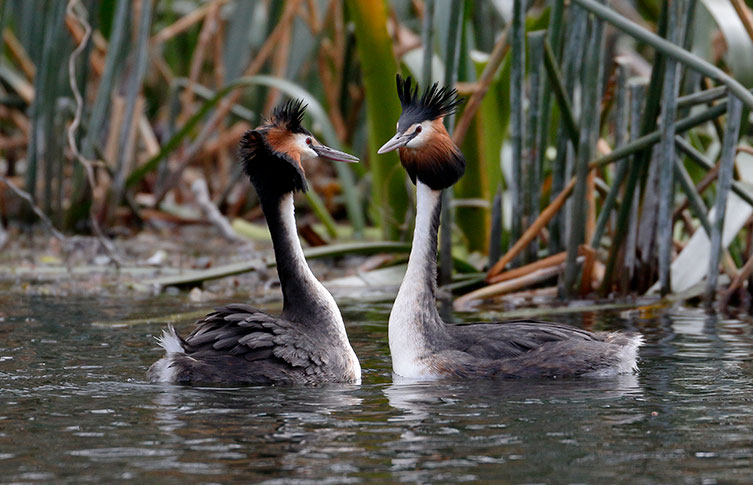
The courtship dances of the great crested grebe (Podiceps cristatus) are sometimes described as water ballet.
The male and female meet on the water and perform a serene dance together, which is thought to strengthen their bond. They begin with head shakes and running their bills through the feathers on their backs, which is known as bob-preening.
Next they begin a weed dance. Both birds dive deep underwater, scooping up a beakful of weeds. When they emerge, they swim towards each other and rear up breast to breast, still clutching their weeds, before eventually settling back on the water for more head shaking.
There are 22 known species of grebe, and some have even more elaborate courtship dances.
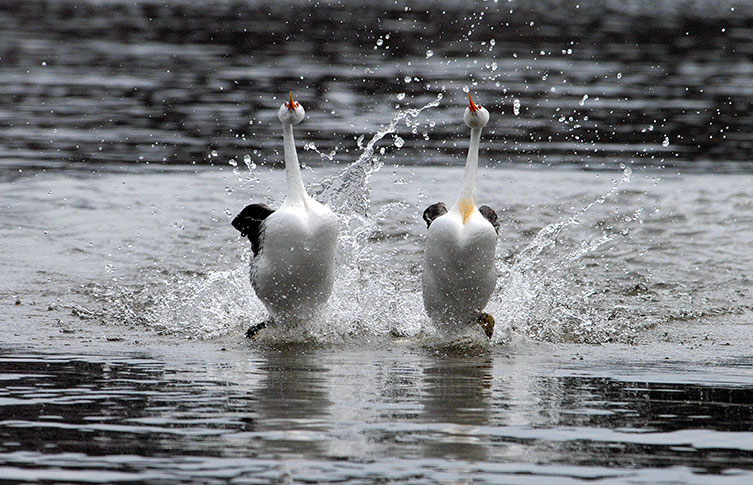
A pair of Clark's grebes rushing across the water's surface together © Dave Menke/USFWS via Flickr (CC BY 2.0)
Clark's grebes (Aechmophorus clarkii) and western grebes (Aechmophorus occidentalis), are both found in North America and perform similar ceremonies. Like the great crested grebe, there is bob-preening and head shaking, but the North American birds' standout move is a dramatic side-by-side rush across the water's surface. As they move, they hold themselves upright, furiously paddling their feet and making it appear as though they are walking on water rather than swimming.
The hooded grebe (Podiceps gallardoi) is a critically endangered Patagonian species. Its dance is one of the more spectacular, comprising several unusual moves. Their frantic head-bobbing and bellyflop-like dives forward into the water may look especially bizarre to an outside observer.
Manakins
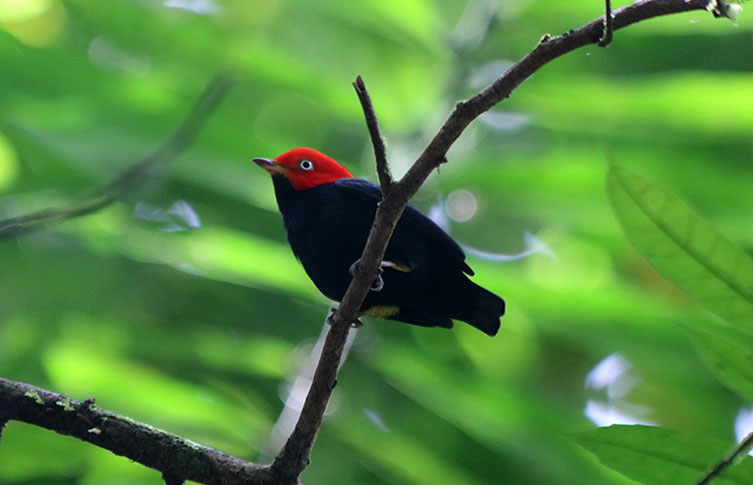
Male red-capped manakins are known for their moonwalk-like dance © Ben Keen via Wikimedia Commons (CC BY-SA 4.0)
The red-capped manakin (Ceratopipra mentalis), found in humid forests from Mexico to Peru, has an instantly recognisable move in its repertoire: males will moonwalk along branches to impress females.
There are about 60 known species of manakins and many of them exhibit courtship behaviours, including dance-like movements and sounds, from pops to violin-like noises made with modified wing feathers.
In some manakin species, such as the blue-backed manakin (Chiroxiphia pareola), males don't work alone. Instead, they perform group routines of two or more males, singing and dancing in a coordinated way on display perches.
Like a number of other birds, a male manakin's traits and courtship dance are likely the only cues a female manakin has to assess his quality - after mating, male manakins don't offer any direct benefits. The female will build her nest and raise their young alone.
Smooth newts
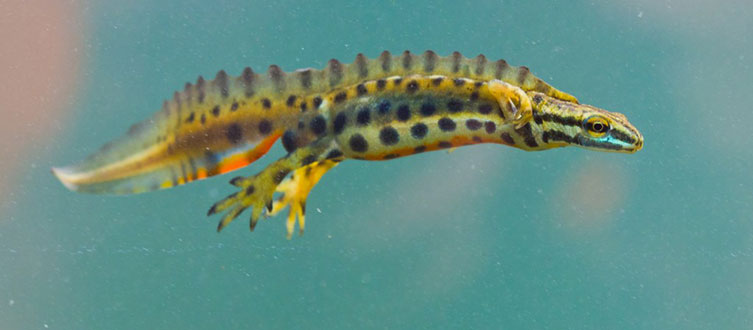
Male smooth newts fan their tails to attract a female's attention © Mark Hofstetter via Wikimedia Commons (CC BY-SA 3.0)
Smooth newts (Lissotriton vulgaris), also known as common newts, are found across Europe and western and central Asia, and are one of the UK's three newt species. For most of the year, males and females look quite alike, but in the breeding season, males develop a crest and their colours become more vivid.
To attract a female, a male newt has to first get her attention, so he places himself in front of her. If she doesn't swim away, the male folds his tail along his body in a U shape and waves it quickly. Although this may look like a fancy fan dance, this movement is actually used to waft pheromones toward the female behind him.
If the female newt is still engaged, the male spins around and backs up, depositing a spermatophore for the female to uptake to fertilise her eggs. If she isn't successful, however, the male newt has to perform his routine from the beginning.
Lesser florican
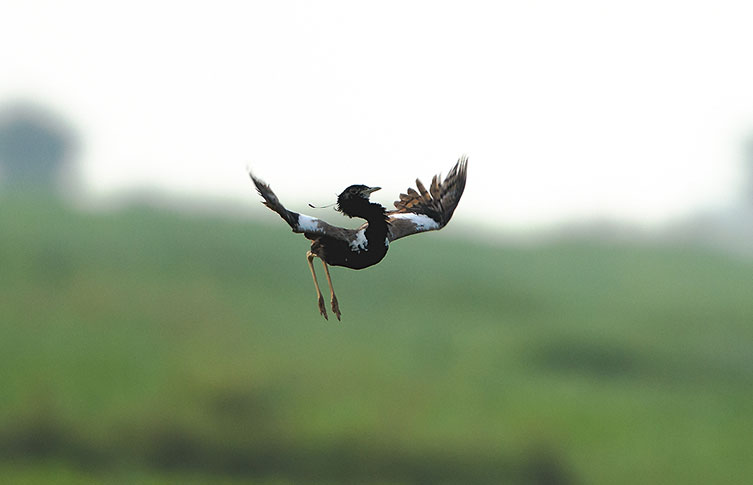
Lesser floricans can repeatedly leap up to two metres into the air © Koshy Koshy via Flickr (CC BY 2.0)
The lesser florican (Sypheotides indicus) is found in grasslands in India and is known for the males' dramatic, fluttering leaps to attract the attention of females. Lesser floricans stand at about 50 centimetres tall and will spring up to two metres into the air.
With a flurry of flapping, the bird leaps and throws its head back. At the top of its jump, it pulls in its wings and begins to fall, parachuting back to the ground. A 1985 study found that males typically leap once per minute when displaying. Nearby females appeared to cause them to jump more frequently.
The lesser florican breeds during monsoon season. Over a three-month period it can spend about a third of each day displaying, leaping around 400 times.
Weedy seadragons
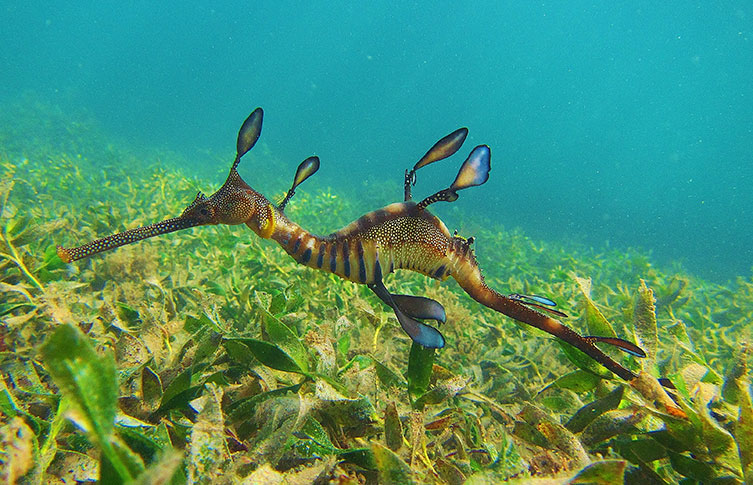
Weedy seadragons waltz serenely through the water together © Katieleeosborne via Wikimedia Commons (CC BY-SA 4.0)
The weedy seadragon (Phyllopteryx taeniolatus) gets its name from the leaf-like appendages on its body. These serve as camouflage in the rocky reef and seagrass habitats on the south coast of Australia.
Male and female seadragons perform their serene courtship ritual together, swimming side by side and mirroring each other's body movements. Their slow dance usually takes place in spring when the evening light begins to fade.
Like seahorses, the male seadragon will become responsible for carrying the female's eggs until they hatch. Male seadragons don't have a pouch like seahorses do, however. Instead the eggs are attached to an area on the underside of the tail.
Birds-of-paradise
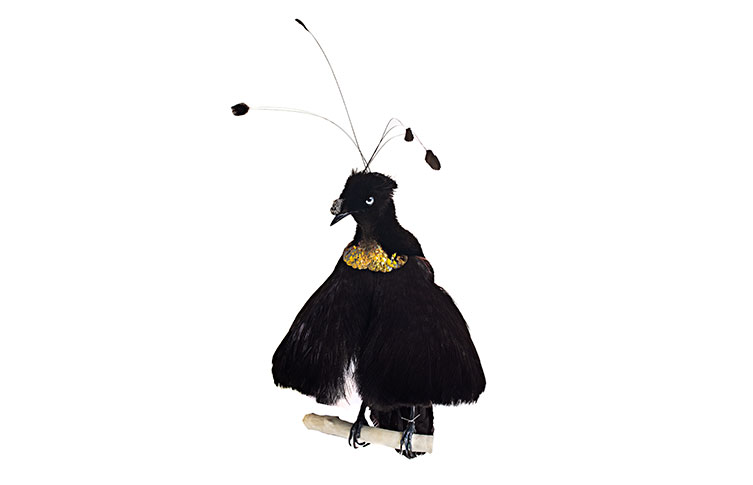
Male parotias are known for their ballerina dances, which they use to impress nearby females
Birds-of-paradise are a family of birds found in dense rainforests in Papua New Guinea and eastern Australia. The males are often eccentric-looking and many of the 42 species perform intricate sets of movements that look like dances. Each species has its own set of moves, and it can take years for the birds to fully master their choreography.
Parotias, also sometimes called six-plumed birds-of-paradise, such as the Carola's parotias (Parotia carolae) or Lawes's Parotia (Parotia lawesii), use the ground as a dancefloor and have some of the most complex sets of steps of any birds-of-paradise, with several elaborate moves performed in a specific order. Parotias perform what is sometimes called the ballerina dance. The male spreads his feathers out like a tutu, dances from side-to-side and waves his head to try and impress the females looking down at him.
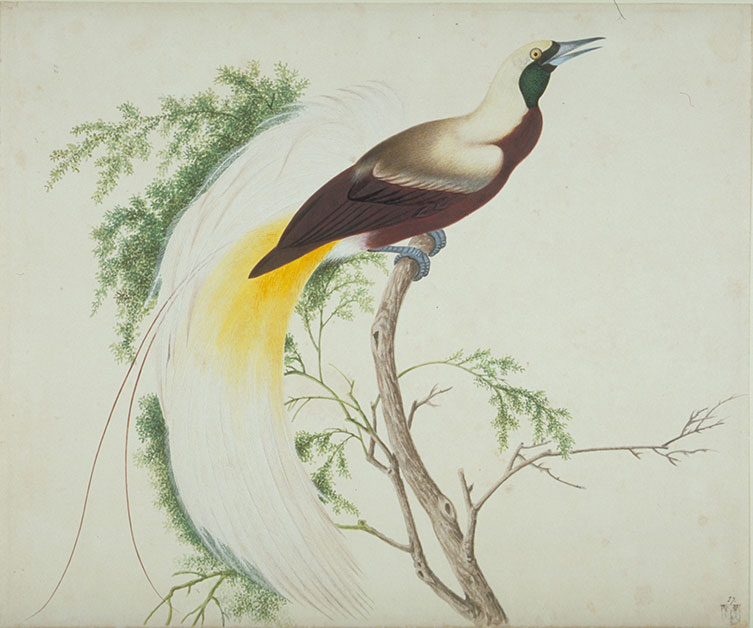
A watercolour of a greater bird-of-paradise from the John Reeves Collection of Zoological Drawings from Canton, China. All rights reserved.
Greater birds-of-paradise (Paradisaea apoda) perform higher in the canopy using a collection of branches for their display court. They use a variety of calls during their display and complete several bows and poses before the dance. The dance involves shuffling and bouncing along the branches of the court with their long, colourful plumes cascading forwards over their backs.
A 2018 study found that the height that birds-of-paradise perform at may influence the complexity of their displays. Those that perform on the ground tend to have larger behavioural repertoires, whereas those that display in the canopy rely more on sounds.
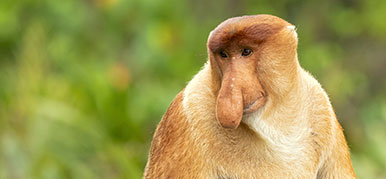
What on Earth?
Just how weird can the natural world be?
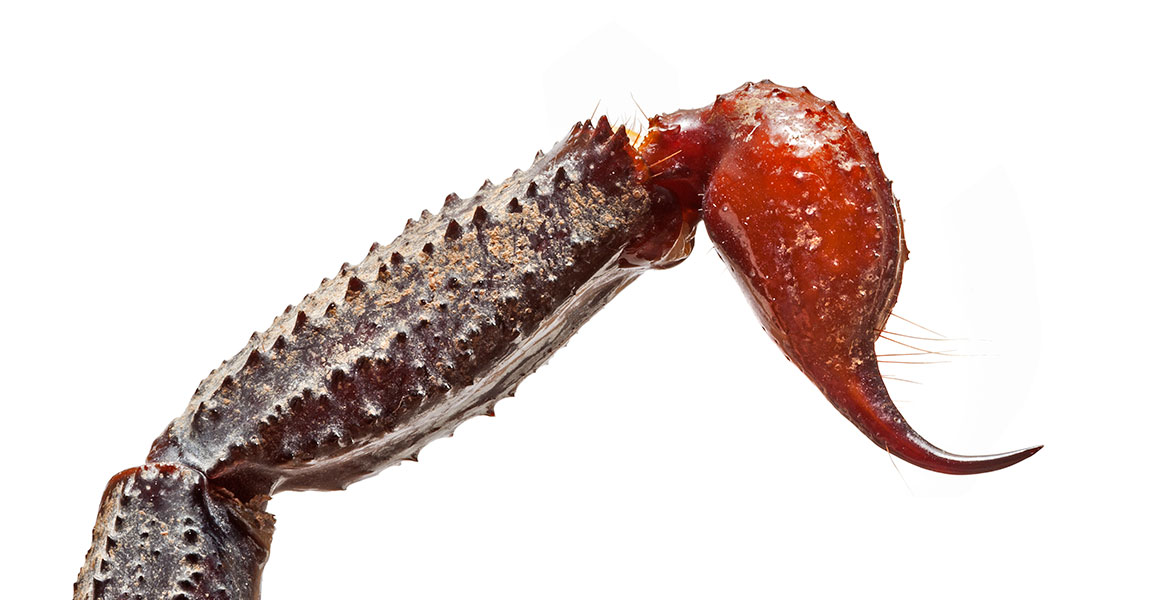
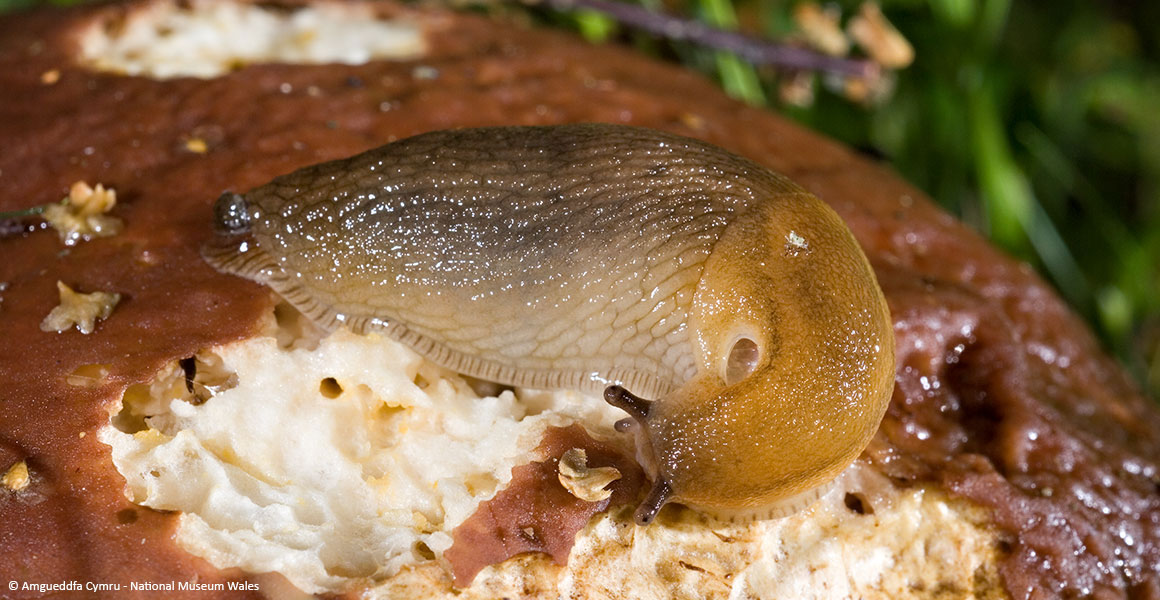

%20sbs-landscape.jpg)
Don't miss a thing
Receive email updates about our news, science, exhibitions, events, products, services and fundraising activities. We may occasionally include third-party content from our corporate partners and other museums. We will not share your personal details with these third parties. You must be over the age of 13. Privacy notice.
Follow us on social media